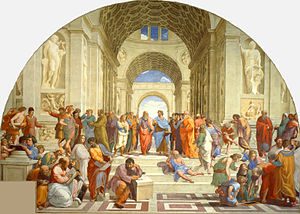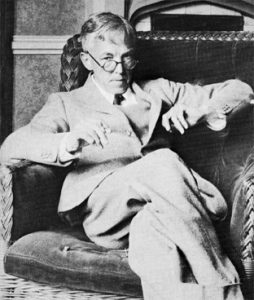The Merriam-Webster Dictionary says that mathematics is the science of numbers and their operations, interrelations, combinations, generalizations, and abstractions and of space configurations and their structure, measurement, transformations, and generalizations. Although it should, a fundamental fact is not included in this definition: that it is often the aesthetic emotion, the sense of beauty, which guides the mathematician when he deduces or decides which properties of numbers or abstract entities he is going to study. The scholars of the language, more attached to the things of letters than to those of numbers, do not seem to have noticed the inextricable link between mathematics and beauty, which someone said was the true guide in the great, and not so great, mathematical discoveries.
This importance of aesthetic values in mathematics, which places it halfway between art and science – an art with applications, as I had occasion to write in La poesía de los números (The Poetry of Numbers), a book I devoted precisely to analysing the importance of beauty in mathematics – reinforces the unavoidable link between the abstract science par excellence and the emotional sensitivity inherent to the human species. “It may be surprising to see emotional sensitivity invoked in connection with mathematical demonstrations,” wrote Henri Poincaré, “which seem to be of interest only to the intellect. This would be to forget the feeling of mathematical beauty, of geometrical elegance, which constitutes a true sense of beauty, known to all mathematicians and which surely belongs to the emotional sensibility”. The fact that the beauty of mathematics is difficult to appreciate – because it is not perceived by an act of sensory perception, as is the case with music or painting, but by a process of discursive thought – does not make it any less real.

Like so much else in Western culture, the existence of this connection between beauty and mathematics began to be recognised as a result of the judgements of those great opinion-makers who were the classical Greek philosophers, especially Pythagoras, Plato and Aristotle. For Plato, the qualities of measure and proportion, the essence of Greek mathematics, are synonymous with beauty; while, for Aristotle, “The forms that best express beauty are order, symmetry, precision. And mathematics is especially concerned with them”. Since then, legions of scientists and thinkers throughout history have praised the beauty of mathematics. “Geometry is the archetype of the beauty of the world”, wrote the astronomer, astrologer and mathematician Johannes Kepler in the 17th century; and, more recently, in the 20th century, we find phrases like this one by the philosopher and logician Bertrand Russell: “Mathematics possesses not only truth, but supreme beauty, a cold and austere beauty, like that of sculpture, without attraction for the weaker part of our nature”.

But perhaps its greatest advocate was Hardy. His magnificent A Mathematician’s Apology is, almost from the first to the last word, a defence of the aesthetic value of mathematics: “Beauty is the first touchstone; there is no permanent place in the world for aesthetically unpleasing mathematics”, Hardy wrote; and also: “The configurations constructed by a mathematician, like those of a painter or a poet, must possess beauty; the ideas, colours and words must be harmoniously assembled”. And of their uselessness – Hardy’s insistence on the uselessness of “real” mathematics has often been seen as another example of his flamboyant and provocative style. For it is almost provocative to write “Real mathematics has no effect whatsoever on war. No one has been able to discover any war purposes or any applications to war that can be derived from such topics as number theory or relativity, and it seems quite unlikely that anyone will be able to do so in the near future” almost at the same time that the United States was launching the Manhattan Project and building the first atomic bombs. But, ironically, the first thing that the Encyclopaedia Britannica reviews in its biography of Hardy is the so-called Hardy-Weinberg law, to which in a later entry the Britannica devotes more space than to Hardy himself, saying: “Hardy placed little value on this law, but its importance is central to the study of many genetic problems, including the distribution of Rh according to blood groups and haemolytic diseases”. Although, to me, Hardy’s impudent praise of the futility of mathematics has another meaning than mere histrionics: Hardy, in his own way, was declaring that in matters of aesthetics he was a follower of Kant, that is, he was arguing that mathematics is more art – an aimless purpose – than science.
Andrés Trapiello wrote: «Poetry is unprovable truth». According to the dictionary, poetry aims to express beauty or aesthetic feeling through words, in verse or prose. Mathematics, after all, are proven truths, so its universe should not be too far removed from that of poetry.
References
A.J. Durán, La poesía de los números, RBA, Barcelona, 2010

Leave a Reply